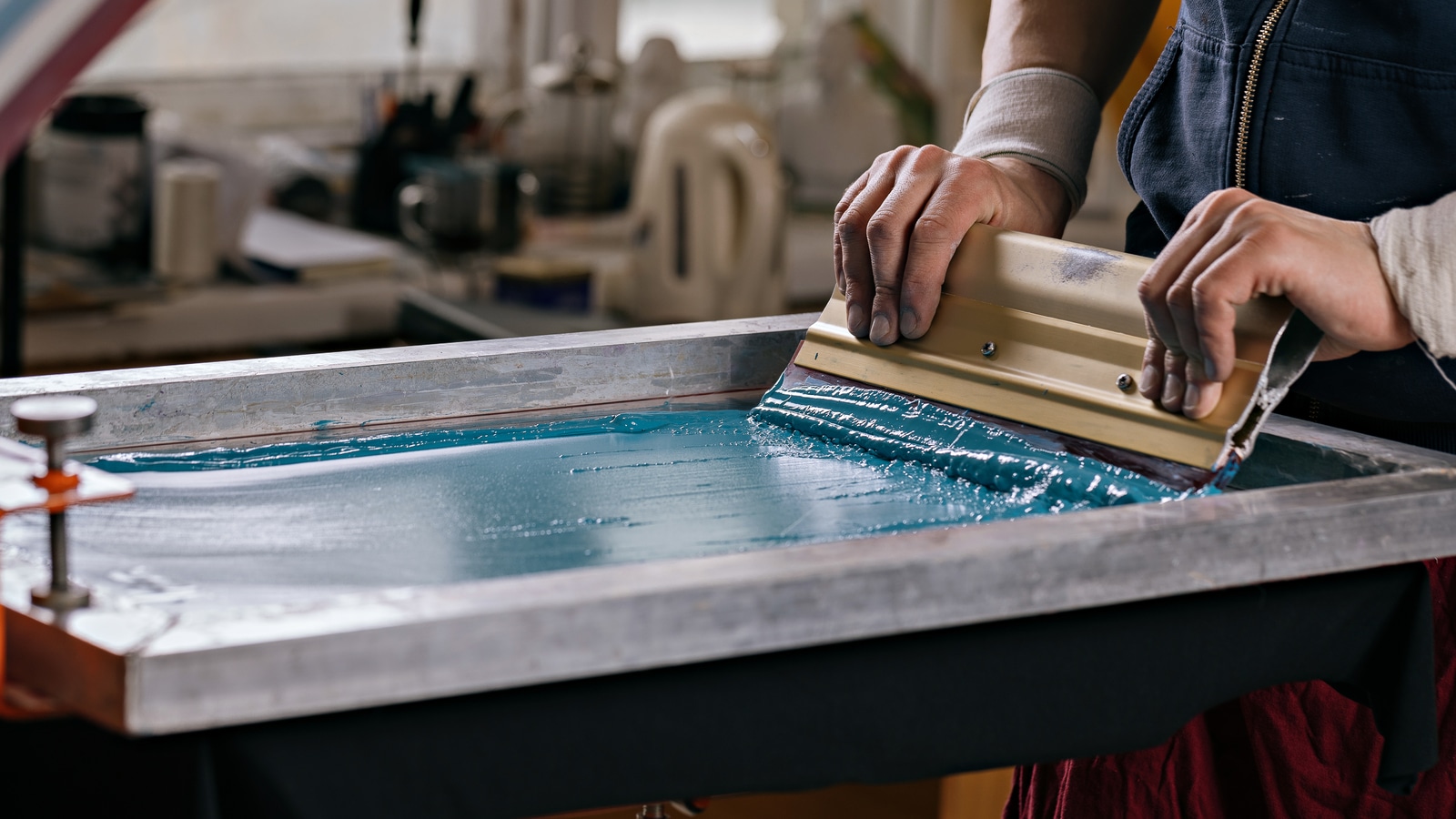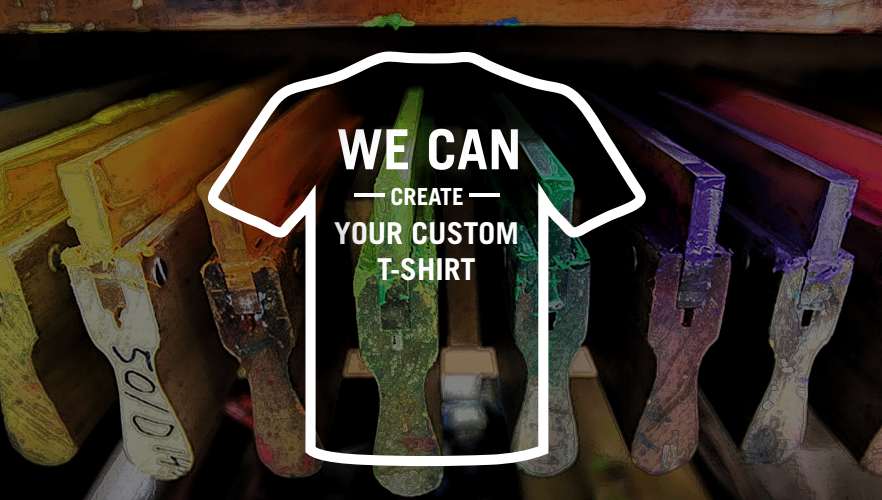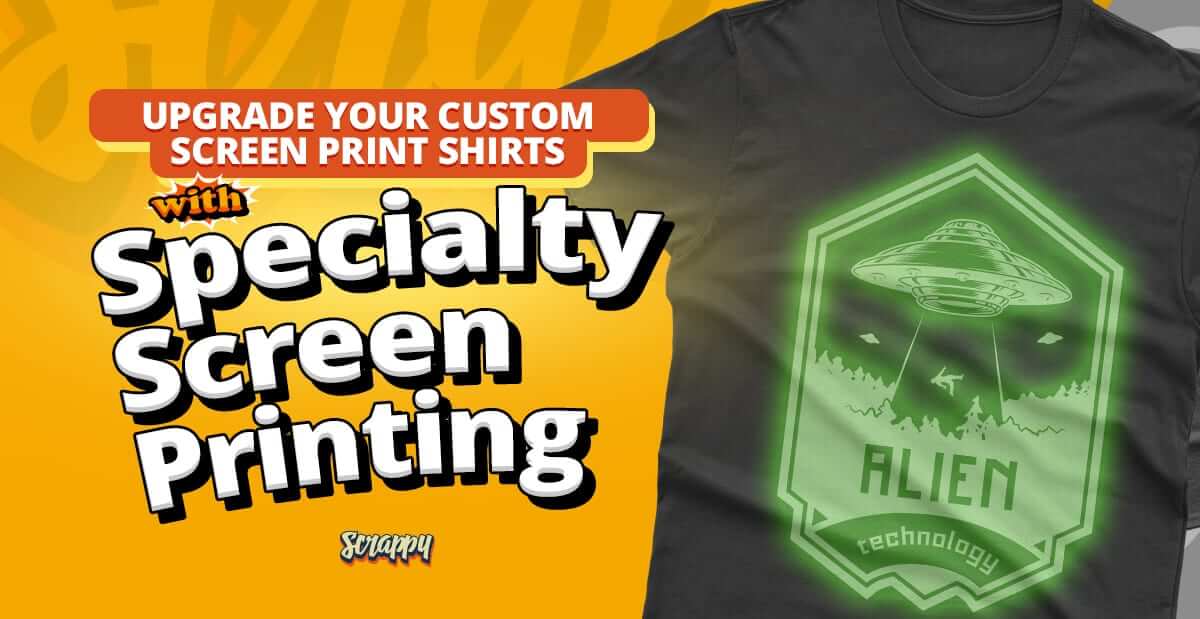High-Volume T-Shirt Printing for Schools and Organizations
High-Volume T-Shirt Printing for Schools and Organizations
Blog Article
Display Printing Uncovered: Every Little Thing You Need to Find Out About Tee Shirt and Garment Printing Strategies
Display printing is an interesting technique that incorporates art with method, using countless possibilities for imagination. All set to discover the crucial components that make screen printing an art type?
The Basics of Screen Printing: Exactly How It Works
When you dive right into screen printing, you'll find it's both a science and an art. At its core, screen printing entails producing a pattern, or screen, that enables ink to pass through just in particular areas.
Following, you'll mix your inks and prepare your printing surface area. Position the display over the material, then use a squeegee to push ink through the screen onto the garment. This procedure calls for precision, as you want clear, vibrant prints. After printing, you'll heal the ink with heat, ensuring it follows the material and lasts via cleans. Each step is vital, and mastering them will raise your screen printing skills, changing simple garments into distinct, meaningful pieces.
Kinds Of Screen Printing Strategies
Once you grasp the essentials of display printing, it's time to discover the different techniques that can raise your styles. One preferred method is standard screen printing, where ink is pressed with a stenciled display.
If you're going for great information, think about discharge printing. This strategy gets rid of dye from the material, leaving a soft, vintage appearance. Another choice is plastisol printing, recognized for its toughness and vibrant colors, making it a preferred for several brand names. Finally, explore halftone printing to produce slope effects and complex designs. Each strategy has its distinct appeal, so do not wait to try them out to locate what matches your design best!
Important Equipment for Display Printing
To achieve stunning results in display printing, having the ideal devices is basic. You'll need a sturdy screen printing framework, which holds the mesh that transfers your layout onto the garment. Next, spend in top quality mops; these are vital for applying ink uniformly throughout the display.
Selecting the Right Inks and Products
When choosing inks and products for screen printing, you require to think about the kind of ink that works finest for your project. Consider fabric compatibility to assure your layouts look last and great lengthy. Also, discover environment-friendly ink alternatives to make your printing procedure much more lasting.
Kinds Of Display Inks
Picking the appropriate display ink is vital for achieving vivid, resilient prints that fulfill your task's needs. There are numerous kinds of display inks to check out. Specialized inks, such as glow-in-the-dark or metal, can add special impacts to your designs.

Textile Compatibility Considerations
Comprehending material compatibility is important for achieving top notch display prints, particularly because various materials respond uniquely to different inks. Constantly check your inks on example fabric to guarantee they adhere correctly and maintain shade honesty. Furthermore, maintain in mind that fabric weight and appearance can affect the final end result, so choosing the appropriate ink and material combination is essential for your project's success.
Eco-Friendly Ink Options
Eco-friendly inks are becoming a preferred option for display printers that desire to lessen their environmental influence while preserving top quality. When selecting inks, take into consideration water-based inks, which are less dangerous and much easier to clean up contrasted to standard solvents.
In addition, try to find inks made from renewable energies, such as soy or vegetable-based options. By selecting the ideal inks and materials, you'll not just develop magnificent styles yet likewise add to a more sustainable printing procedure. Make the button, and your prints will mirror your dedication to the atmosphere!
Preparing Your Style for Screen Printing

Submit Layout Requirements
To guarantee your style looks dynamic and sharp on material, you'll require to pay attention to file format needs for screen printing. Begin with vector documents like our website AI or EPS, as they can be scaled without losing quality. If you make use of raster photos, go with high-resolution files, such as TIFF or PNG, preferably at 300 DPI. Prevent using JPEGs, as they can lose clearness when resized. Likewise, see to it your layout has a clear background to avoid unwanted white edges on your prints. Keep shade settings in mind; CMYK is conventional for screen printing, so transform your RGB creates accordingly - screen printing kit. By adhering to these guidelines, you'll establish your artwork up for a successful print.
Color Separation Methods
Color separation is a crucial action in preparing your style for screen printing, and understanding it can considerably boost your print quality. You'll require to break your layout into specific colors, as each color needs a separate screen during printing. Begin by determining all the colors in your style and produce layers for each one. You can make use of software like Adobe Photoshop or Illustrator to isolate and separate colors efficiently. Be particular to conserve each layer as a different documents, usually in a layout like TIFF or PSD. This accuracy not only assures accurate shade representation however also enhances the printing procedure. By focusing on shade splitting up, you'll accomplish specialist and dynamic lead to your screen-printed garments.
Resolution and Dimension
Accomplishing the most effective cause screen printing begins with ensuring your layout has the ideal resolution and size. Ideally, your art work should go to least 300 DPI (dots per inch) for sharp, clear prints. If you use reduced resolution, your end product could look pixelated and less than professional.
When it comes to dimension, consider the measurements of your print area. Style your artwork to match the last print dimension, ideally producing it in the real measurements you'll be printing. By doing this, you'll stay clear of any unexpected scaling problems.
Constantly examine your design in both vector and raster formats. Vector graphics can be scaled without shedding top quality, making them ideal for display printing. Preparing correctly will assure your layout looks impressive on every garment!
Step-by-Step Screen Printing Process
Display printing is a vibrant procedure that allows you to produce vibrant styles on various surface areas. To get begun, you'll need a display, solution, and your chosen ink.
Pour ink onto the screen and use a squeegee to press the ink through the stencil onto the fabric. Raise the screen carefully and allow the print completely dry. You have actually successfully screen published your style.
Tips for Effective Screen Printing Projects
While you're diving right into your display printing jobs, keep in mind that preparation is key to success. Beginning by gathering all your materials-- inks, screens, mops, and garments. A tidy workspace helps prevent unwanted errors, so clean up before you begin.
Next, verify your art work is high-resolution and effectively sized for your garment. Check your display for correct direct exposure and clean it completely to prevent smudges. When mixing your inks, comply with the supplier's guidelines to accomplish the right uniformity.
During printing, apply even pressure with your squeegee for regular outcomes. Don't hurry; take your time to verify each print satisfies your criteria. After printing, let your their explanation garments completely dry totally before taking care of or packaging them.
Last but not least, always keep an example of your anchor work for future referral. In this manner, you can assess your development and improve your strategies gradually. Delighted printing!

Frequently Asked Questions
The length of time Does It Take to Establish a Screen Printing Task?
Setting up a screen printing task usually takes around half an hour to an hour. You'll prepare the displays, mix inks, and readjust journalism. The time varies based upon complexity and experience, so stay organized!
Can I Print on Different Fabric Keys In Utilizing the Exact Same Method?
Yes, you can print on different textile types using the very same method, yet you'll require to readjust your settings and inks. Some textiles absorb ink differently, so experimenting warranties the finest results for every product.
What Prevail Blunders to Prevent in Screen Printing?
When screen printing, prevent usual errors like utilizing the wrong ink, neglecting correct direct exposure times, or skipping pre-press checks. Constantly evaluate your setup and keep clean displays to ensure top quality outcomes each time.
Exactly How Can I Effectively Tidy and Maintain My Display Printing Equipment?
To appropriately clean and maintain your display printing tools, you should regularly clean screens with ideal solvents, check squeegees for wear, and ensure all devices are saved completely dry and dust-free. Consistency improves and protects against costly repair services performance.
Is Display Printing Ecologically Friendly Contrasted to Other Methods?
Screen printing can be much more eco-friendly than other approaches, especially if you utilize water-based inks and eco-conscious products. By choosing lasting materials and techniques, you reduce waste and reduce your impact on the world.
Screen Printing Uncovered: Whatever You Need to Know About Tee Shirt and Garment Printing Strategies
At its core, screen printing includes producing a pattern, or display, that permits ink to pass through only in certain locations. Setting the screen over the material, after that utilize a squeegee to press ink via the display onto the garment. One popular method is conventional display printing, where ink is pressed with a stenciled screen.When selecting inks and materials for screen printing, you require to take right into account the kind of ink that works ideal for your job.
Report this page